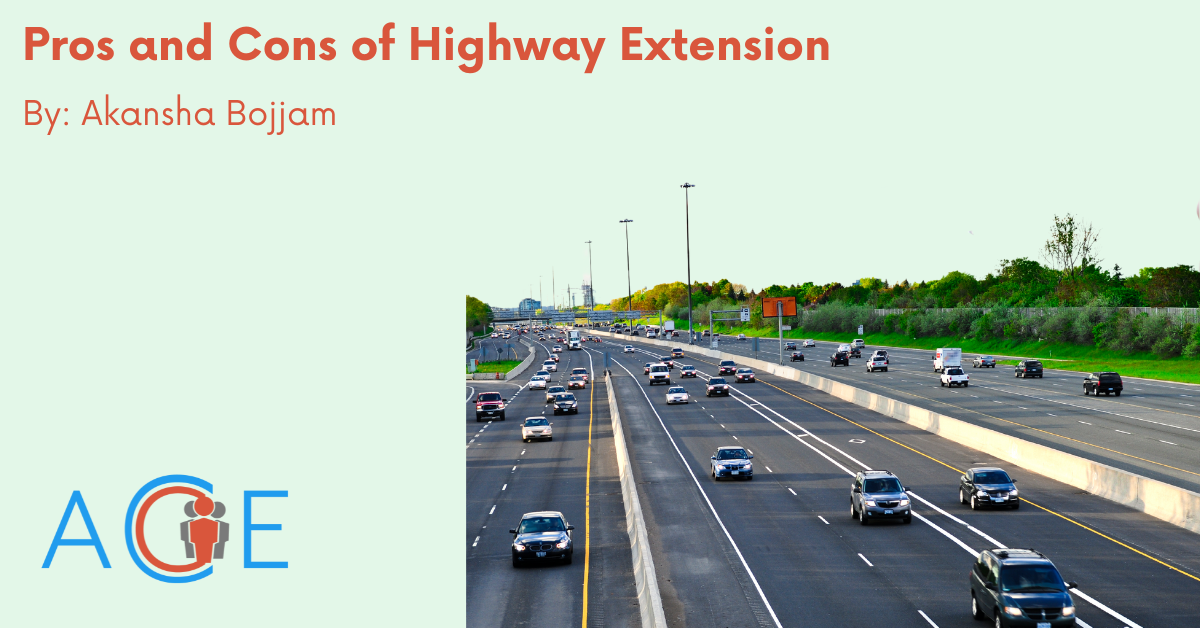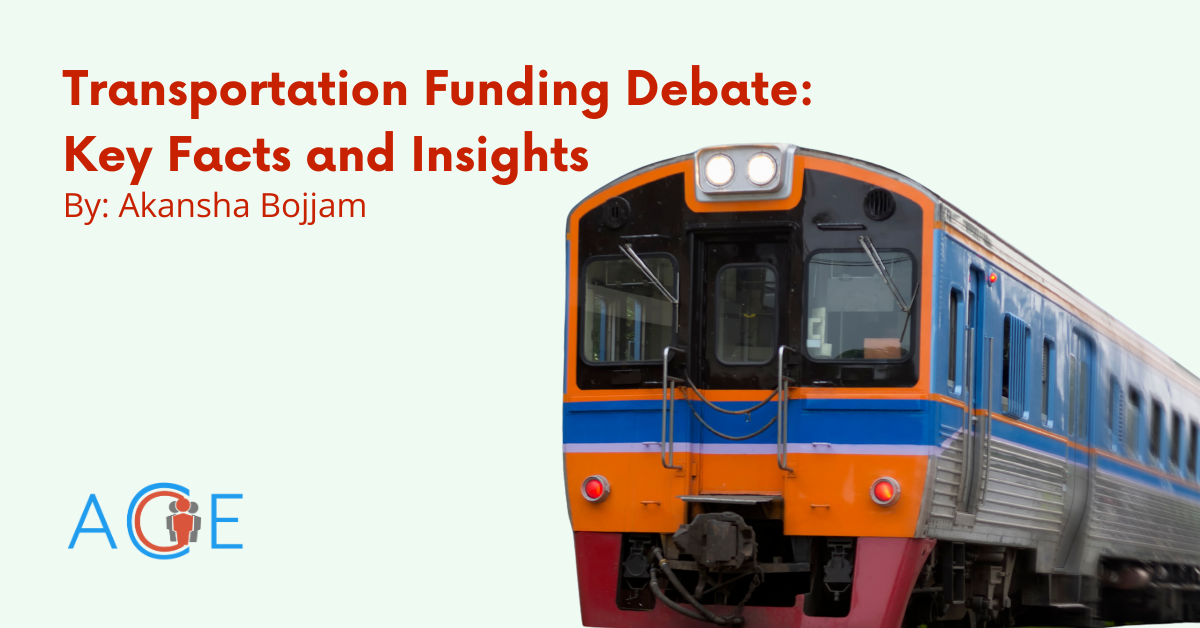Prior to the completion of the interstate highway system in the United States, the nation’s infrastructure was marred with safety issues that spurred supply chain delays, posed hazards to travelers, and compromised national defense. The US highway system was built in the 1950s to overcome these problems. Highways were dubbed “arteries of commerce” in recognition of their critical role in supporting the American economy. Today, America’s highway system is faced with a new problem: increasing congestion, even outside of normal rush hour traffic.
While development of the U.S. interstate highway system has largely stagnated, the nation’s economy has continued to grow and contribute to traffic. Without additional transportation capacity, congestion will continue to increase, diminishing productivity and increasing transportation costs. Congestion on interstate highways has two main sources: lack of capacity for traffic and suboptimal operation of infrastructure. To resolve these issues, the federal government has proposed several funding projects to reduce congestion. Highway expansion, or adding lanes to existing highways, is one possible solution that has attracted recent debate over its potential impacts on safety, the economy, and the environment.
Pros of Highway Expansion
Proponents of highway expansion argue that increasing roadway capacity will address the first source of congestion and lead to critical economic benefits. Highway infrastructure plays an essential role in national supply chains, moving goods and services such as groceries and medical supplies. Proponents cite research that suggests the economic benefits of the U.S. highway system far outweigh construction and maintenance costs. For example, the average annual construction and maintenance cost for 10 miles of highway is $1.9 to $6.5 million, while the annual economic benefits total $10 to $20 million.
Proponents of highway expansion also contend that expanding highways improves commuter satisfaction. Commuter satisfaction declines dramatically as commute length increases. Supporters argue that adding new lanes to roads can reduce congestion and decrease driving times, leading to improved commuter satisfaction and productivity.
Finally, proponents argue that expanding the existing highway system is a more efficient means of decreasing congestion than investing in public transportation, another commonly proposed solution. Proponents argue that investments into public transit do not yield the same economic benefits as highway expansion. They also emphasize that increasing public transit capacity is unlikely to relieve highway congestion to the same degree as highway expansion, due to urban sprawl that makes it difficult for public transit to connect suburban areas. Thus, they argue that transit users would still likely have to drive for parts of their journeys, causing inefficiency and having little to no effect on congestion.
Cons of Highway Expansion
The primary argument against highway expansion involves the concept of induced demand. Induced demand theorizes that expanding highway capacity will cause an increase in traffic, as the added lanes cause more people to use the roads. One study using national highway data supported this theory, finding that “added lane mileage can induce significant additional travel”. Therefore, critics argue that highway expansion projects might increase traffic and congestion rather than reducing it.
Moreover, critics of highway expansion argue that induced demand will result in more cars on the road at once, which can increase accident frequency. They refute the idea that more lanes will create more space and less accidents, citing research that suggests that greater highway capacity is not associated with fewer accidents. Critics of highway expansion claim that increased urbanization and motorization has led to more road fatalities, and reducing the share of travel in private cars is a better method to prevent roadway deaths.
Critics also argue that highway expansion may cause environmental degradation through increased pollution and emissions. They contend that the government could invest in transportation solutions such as electric vehicle lanes and public transit networks instead of putting resources towards long-term lane addition projects. These alternative investments could improve safety, address health concerns, reduce emissions, and result in increased climate resilience.
Finally, opponents of highway expansion point to the harmful socio-economic impacts of building highways. Historically, many highways displaced businesses and communities, with a disproportionate impact on communities of color. For example, the construction of Interstate 496 in the 1950s displaced a middle-income, African-American neighborhood in Lansing, Michigan. More recent highway expansion projects have similar harmful effects on surrounding communities. The Texas Department of Transportation’s plan to expand a section of Interstate 35 in Austin, for example, is expected to displace more than 100 homes and businesses.
Does Highway Expansion Actually Induce Demand?
Although many opponents highlight induced demand as a key reason to avoid highway expansion, proponents argue that there are some nuances to consider. The first is that induced demand is a gradual process, as expanding highways will provide at least short-term relief from congestion. Furthermore, some experts argue that induced demand is not a logical argument against highway expansion because highway users have already accounted for congestion when they choose to utilize a road. With more roadway capacity, more highway users are able to travel and gain better access to farther locations.
Additionally, it is important to note that induced demand assumes that demand for roads is essentially infinite. Some view this assumption as valid because lessened traffic may encourage urban sprawl and drive up demand for more highways as new towns are developed. Others disagree with this assumption and argue that demand is never infinite, as there is a limit to the number of drivers in an area.
Alternative Solutions
While the debate surrounding highway expansion continues, recent years have brought attention to several alternative solutions to congestion. For example, rather than adding lanes, road diets involve re-designing a portion of existing lanes to accommodate other transportation methods such as bicycles, public transit, or pedestrians. Road diets rest on the idea that eliminating lanes of traffic increases public safety and increases mobility for other types of road users. Another proposed solution is congestion pricing, which charges road users a variable toll depending on the time of day. Some believe this would counter the effect of induced demand by motivating drivers to seek out other forms of transportation. However, congestion pricing is a form of regressive taxation, which would have a disproportionate impact on low-income commuters.
Other recent projects have attempted to mitigate the harmful effects of highway infrastructure. For example, construction for the Park at Penn’s Landing is in progress over I-95 in Philadelphia. This greenspace aims to reconnect the city to the Delaware river, with projected economic, environmental, and social benefits. Additionally, the Reconnecting Communities Pilot Program, created by the Bipartisan Infrastructure Law in 2021, provides grants to projects that aim to mitigate highway infrastructure’s impacts on mobility, equal transportation access, and transportation development. These examples demonstrate an increased focus on long-term sustainability and resilience in transportation infrastructure.


